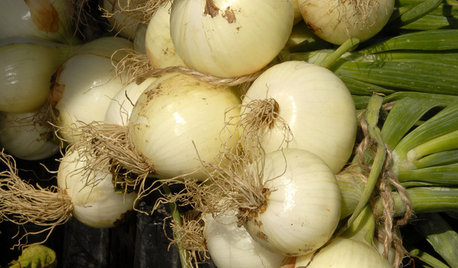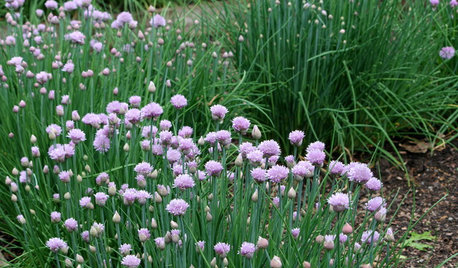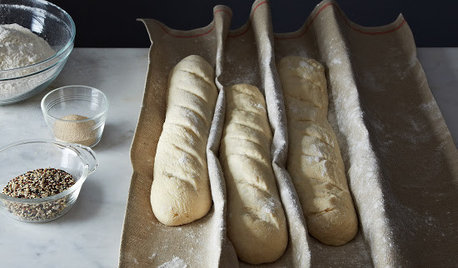Onions bolting....again.
mulberryknob
13 years ago
Related Stories

COOL-SEASON CROPSCool-Season Vegetables: How to Grow Onions
Essential for a cook's garden, onions come in many varieties and show staying power on the shelf
Full Story
HOUZZ TOURSHouzz Tour: A Bolt of British Charm in Brooklyn
A highly decorated New York row house takes its cues from the English countryside
Full Story
COLORConsider Giving Your House a Big Bolt of Blue
From fresh, vivid turquoise to power-packed cobalt, blue is a great way to lift a neutral color palette
Full Story
REMODELING GUIDES11 Reasons to Love Wall-to-Wall Carpeting Again
Is it time to kick the hard stuff? Your feet, wallet and downstairs neighbors may be nodding
Full Story
PRODUCT PICKSGuest Picks: Everything Old-World Is New Again
Give even a new build a romantic history with lighting fixtures, hardware and drapes that recall the Old Country
Full Story
GREAT HOME PROJECTSHow to Create a Built-In Home Bar
New project for a new year: Get the nuts-and-bolts info on building a swank home bar into a nook or wall
Full Story
HERBSHerb Garden Essentials: How to Grow Chives
This decorative and delicately flavored herb from the onion family is easy to grow indoors and out
Full Story
LIFEYou Showed Us: 20 Nutty Home Fixes
We made the call for your Band-Aid solutions around the house, and you delivered. Here's how you are making what's broken work again
Full Story
PRODUCT PICKSGuest Picks: Be Your Own Artisanal Chef
You may never settle for prepared foods again with these cooking tools, gadgets and storage pieces
Full Story
DIY PROJECTS20 Wonderfully Inventive DIY Projects by Houzzers
You'll never look at a wood scrap or empty jar the same way again. Borrow these ideas or just let them inspire your own project
Full StorySponsored
More Discussions






p_mac
ScottOkieman
Related Professionals
Chattanooga Landscape Architects & Landscape Designers · Allentown Landscape Contractors · Belvedere Park Landscape Contractors · Ellicott City Landscape Contractors · Hawaii Landscape Contractors · Oak Forest Landscape Contractors · Stallings Landscape Contractors · Waldorf Landscape Contractors · Wareham Landscape Contractors · West Chester Landscape Contractors · East Norriton Landscape Contractors · Shenandoah Landscape Contractors · Canton Decks, Patios & Outdoor Enclosures · Miami Decks, Patios & Outdoor Enclosures · South Milwaukee Decks, Patios & Outdoor EnclosuresOkiedawn OK Zone 7
slowpoke_gardener
soonergrandmom
joellenh
biradarcm
Okiedawn OK Zone 7
biradarcm
slowpoke_gardener
boomer_sooner
Okiedawn OK Zone 7
boomer_sooner
Okiedawn OK Zone 7
biradarcm
seedmama
biradarcm
Okiedawn OK Zone 7
biradarcm
seedmama
seedmama